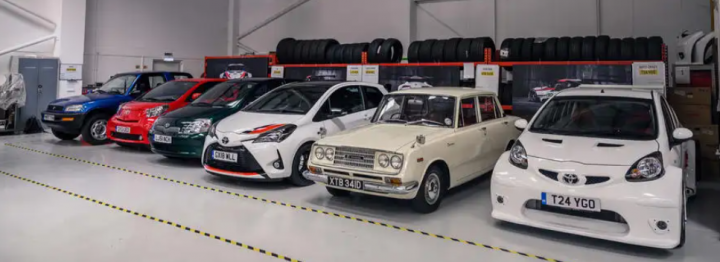With rain lashing down and gales blowing Britain’s classic car owners are putting their cherished vehicles away for winter; but what are the pitfalls to avoid which can lead to heartbreak and big bills when you come to retrieve it next Spring?
The man charged with overseeing Toyota and Lexus UK’s press and heritage fleets has put together his top tips for how to do it right, and the mistakes to avoid.

Press Fleet Manager Graham Bothamley (above) has more than a hundred Toyota and Lexus vehicles in his care, from 1960s examples to cars delivered new just this week, and from a tiny Toyota IQ to the legendary Lexus LFA supercar.
Graham, who is also a Toyota Master Technician, says: “Keeping your classic out of the worst of a British winter is a good idea, but there are some essential things to remember to make sure that your good intentions don’t actually create problems for your car, and your bank balance.”
Graham’s advice applies to any cherished vehicle , of course. In fact given not every brand enjoys the legendary build quality of Toyota and Lexus cars, some may need it even more than our classic owners do, and we’re happy to help.

Here are Graham’s top tips:
- Put your car up on axle stands if possible, it really helps to keep it off the ground, especially to protect your tyres. If this isn’t possible pump your tyres up to the highest safe level you can.
- Fit a “trickle charger” to the battery, ideally one which conditions as well as charges. This ensures your battery will be in tip-top shape next Spring, rather than ready for the bin.
- Clean your vehicle inside and out before storing, using a good-quality wax on the exterior. Invest in a car cover, ideally a breathable one, if you can.
- Ensure the hand brake is left off. If the handbrake is applied the mechanism can seize during storage. However, it’s vital to make sure that the wheels are firmly “chocked” if you’re not using axle stands so that car doesn’t move, causing damage or even a safety issue.
- Leave your windows slightly open to prevent condensation building up inside. This can damage upholstery and other surfaces, and allow mould to breed. This is also a good time to remember to remove anything in the vehicle which could rot or cause smells. Where did you leave that half finished bag of crisps?
- Ensure the vehicle’s antifreeze level is at the recommended maximum – enough to prevent engine freezing.
- Finally, consider placing a humane rodent trap close to the vehicle and check it every few days. It’s amazing just how much damage one little mouse can cause if it decides to build a nest in your engine or wheel arches and feast on your wiring!

Graham added, “This is a simple checklist but it can make a huge difference to how your car emerges from storage for the season next year. Do it right and then you can relax this winter and spend your time planning the upgrades and adventures you’ll have with your classic in 2023, not worrying about it all winter!”



